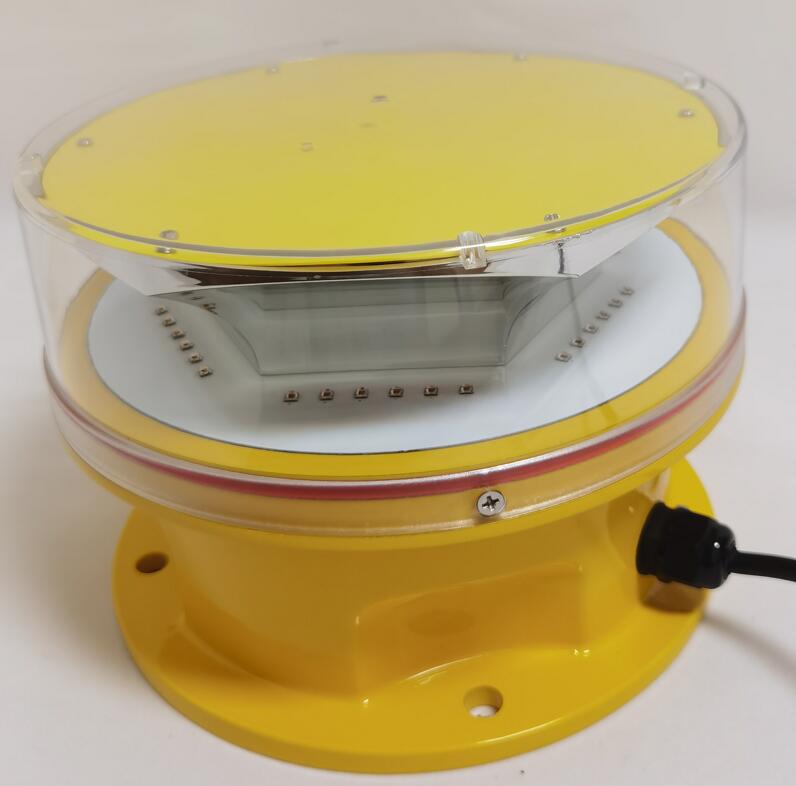Aviation Light for Tower Crane: Guardians of the Urban Airspace
The modern cityscape is a symphony of architectural ambition, a constantly evolving silhouette of steel and glass. Piercing this skyline are the elegant, lattice-work giants—tower cranes—the indispensable workhorses of construction. By day, they are a familiar sight, their jibs sweeping across the azure canvas of the sky. But as dusk falls and visibility recedes, these static structures transform into potential hazards, invisible sentinels in the darkened airspace. This is where the unassuming yet critically important technology of the aviation light for tower crane comes into play, a technology that is not merely about illumination but about creating a dialogue between the earth and the sky.
The primary function of an aviation light for tower crane is unequivocal: collision avoidance. The airspace around urban areas is a complex and busy environment, shared by commercial airliners on approach paths, emergency medical helicopters, law enforcement aircraft, and an ever-growing number of unmanned aerial vehicles (drones). A tower crane, especially one soaring over 60 meters, presents a significant obstacle. The lighting system acts as a constant, unambiguous signal, marking the crane's presence and defining its physical boundaries to any airborne vehicle. This is a non-negotiable element of aerial safety, mandated by international aviation authorities and national regulatory bodies like the FAA (Federal Aviation Administration) in the United States and EASA (European Union Aviation Safety Agency) in Europe. These regulations meticulously specify the type, intensity, color, and placement of lights based on the crane's height and location, ensuring a standardized language understood by all aviators.

The technology behind these beacons has undergone a significant evolution, moving from simple incandescent bulbs to advanced, energy-efficient LED (Light-Emitting Diode) systems. This shift is transformative. Modern aviation light for tower crane units leverage LEDs for their exceptional reliability, incredibly long lifespan, and remarkably low power consumption. This is a crucial advantage, as cranes are often powered by temporary generators on construction sites. Furthermore, LED lights offer superior luminosity and can be engineered to produce a very specific light signature that cuts through fog, rain, and light pollution more effectively than older technologies. The classic red, low-intensity obstacle light, for instance, is now almost exclusively an LED product, providing a clear, persistent warning throughout the night.

A sophisticated lighting system does more than just place a single light at the top. To effectively communicate the crane's profile, lights are strategically placed at the highest point of the crane (usually on the top of the jib and counter-jib) and at intermediate levels on the structure if it exceeds a certain height. This creates a series of illuminated points that allow a pilot to visually extrapolate the full scale of the obstacle. The most advanced systems employ a dual-intensity setup. During twilight and dawn, or in conditions of high ambient light, the lights operate at a lower intensity. As darkness falls, a photocell automatically triggers the system to switch to its full, high-intensity mode. This adaptive intelligence prevents the lights from becoming a nuisance to the surrounding community during periods of lower risk while guaranteeing maximum visibility when it is most needed.
| solar powered aircraft warning lights |
Beyond the core technology, the selection and installation of an aviation light for tower crane involve several critical considerations. Durability is paramount. These devices are exposed to the harshest elements: relentless UV radiation, torrential rain, extreme temperature fluctuations, high winds, and corrosive atmospheres. Therefore, they are housed in rugged, weatherproof casings, often made from materials like polycarbonate or coated aluminum, designed to withstand years of abuse. Reliability is equally critical; a failed light is a potential catastrophe. Many modern systems are equipped with diagnostic features and are designed for easy maintenance, but their fundamental construction is focused on flawless, continuous operation for thousands of hours.
The rise of the drone economy adds a new layer of relevance to this technology. While piloted aircraft rely on these lights, drones operating Beyond Visual Line of Sight (BVLOS) may use them as a visual backup to their digital navigation systems. As urban air mobility concepts like air taxis move closer to reality, the network of obstacles in the lower airspace will need to be precisely and reliably marked. The humble aviation light for tower crane is already laying the groundwork for this future, ensuring that the pathways between buildings are safe for a new generation of aircraft.
In conclusion, the aviation light for tower crane is a masterpiece of purposeful engineering. It is a perfect fusion of regulatory compliance, advanced technology, and unwavering reliability. It transcends its simple function of being a "light." It is a vital communication beacon, a silent guardian that operates every night, ensuring that the progress symbolized by the crane's steel framework does not come at the cost of safety in the skies above. It is the essential element that allows the relentless pace of urban construction to coexist harmoniously with the complex dance of aviation, making it an indispensable protector of both the terrestrial and aerial realms.
